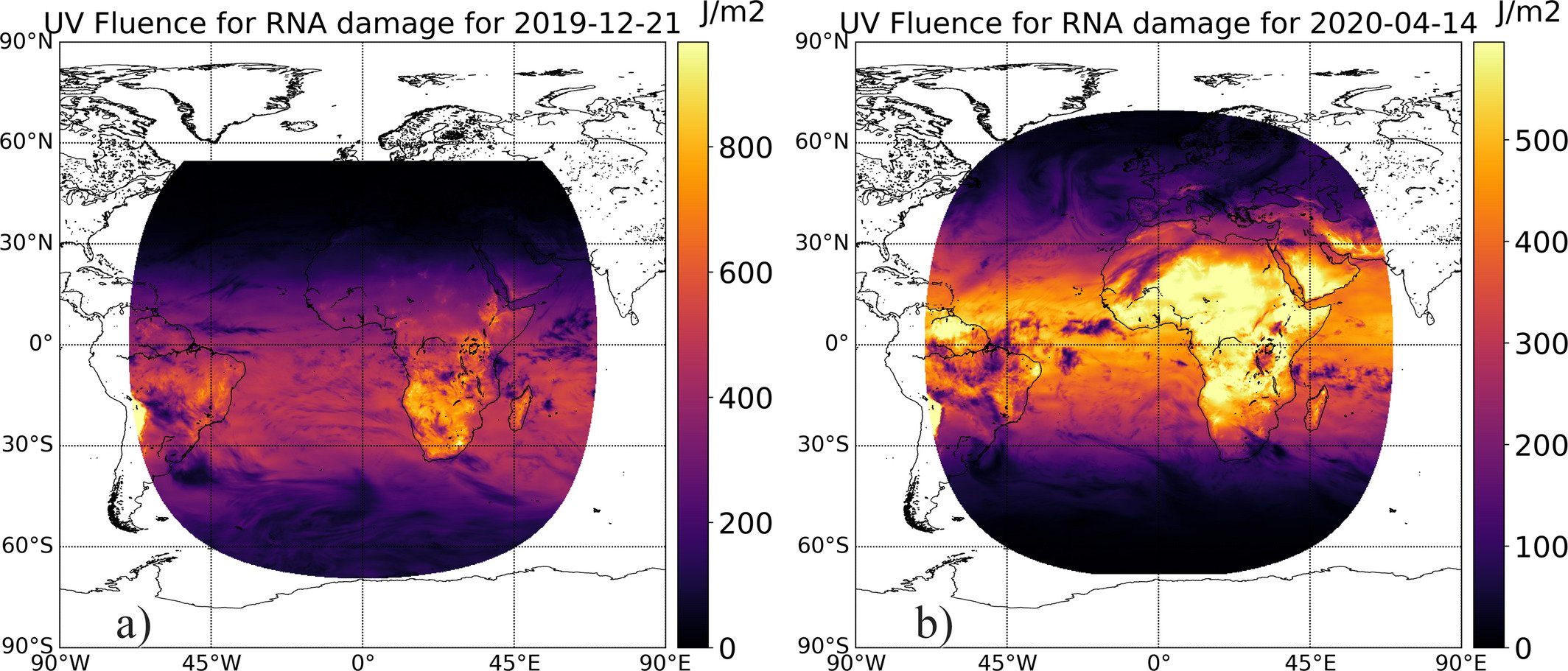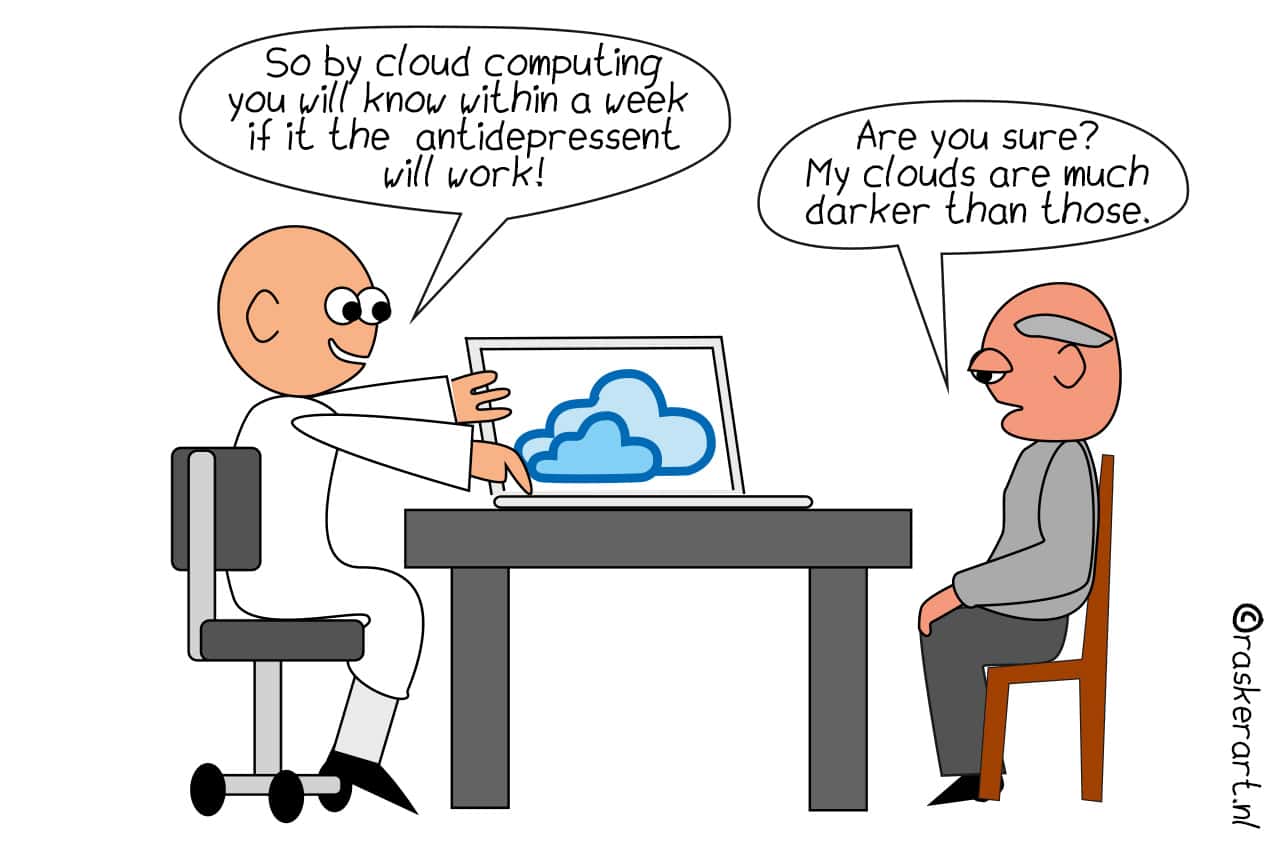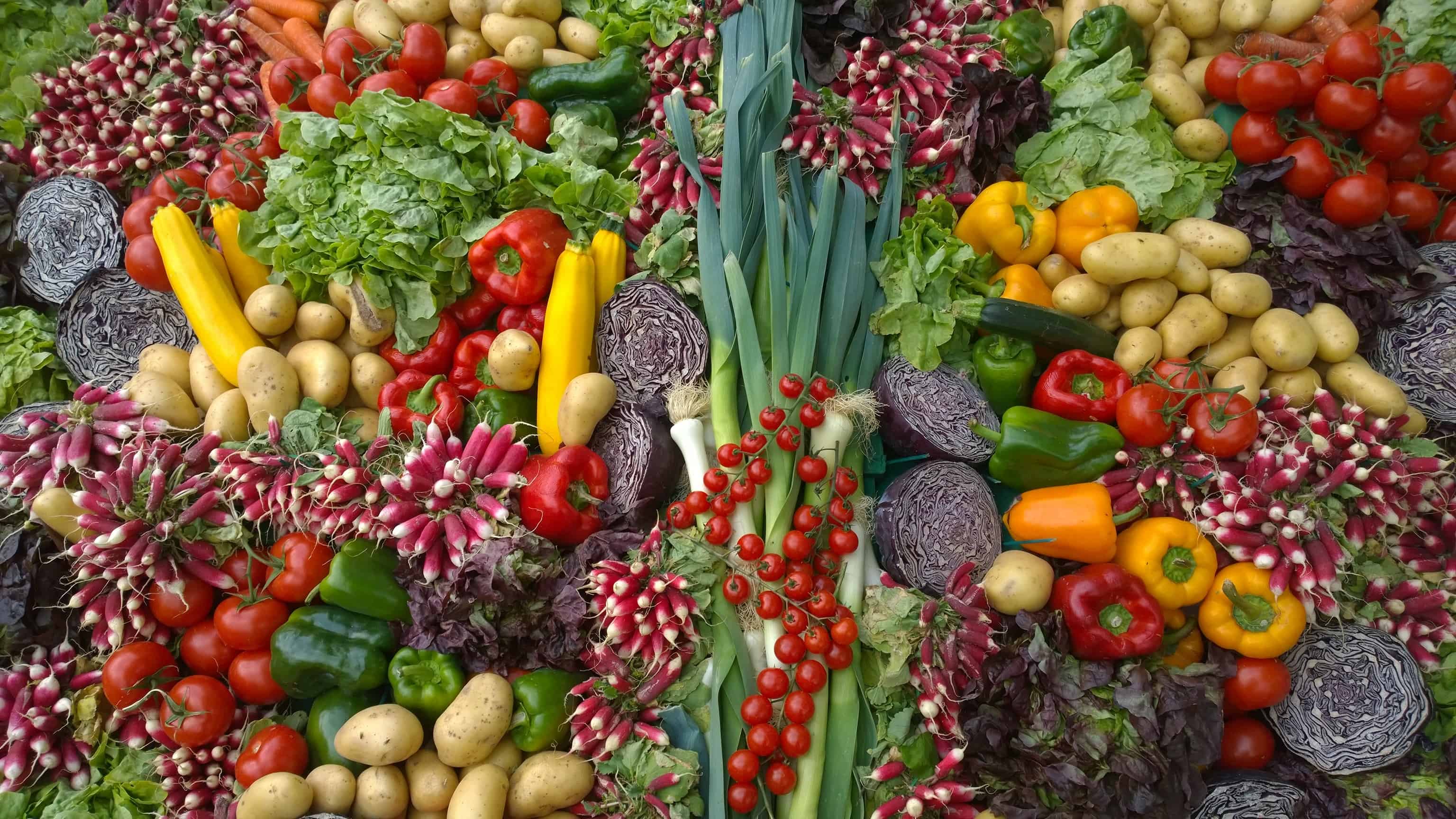
The virus that triggers COVID-19, SARS-CoV-2, spreads not only by droplet infection, but also via aerosols that can remain in the air for up to several hours. Smear infections via contaminated surfaces can also play a role in the spread of the virus and thus in the corona pandemic, albeit a minor one. In a recently published study, an international research team headed by study director Alois Schmalwieser from the Department of Physiology and Biophysics at University of Veterinary Medicine, Vienna, Austria has now investigated how strong outdoor UV radiation is against SARS-CoV-2.
The closer to the equator, the better
Normally, the sun’s natural UV radiation (UVR) is a natural enemy of viruses. However, this virucidal effectiveness of UVR depends primarily on two factors: the sensitivity of the virus to UVR and the amount of incoming radiation. In their study, the researchers combined satellite data on DNA-damaging UVR with available information on the influence of the strength of UVR on the inactivation of corona viruses.
“Our results show that UVR from the sun has a high potential to inactivate corona viruses. However, the extent of this depends strongly on the location and the season, says Schmalwieser. “In subtropical Sao Paulo, Brazil, located at 23.5° south latitude, only one ten-thousandth of all corona viruses survive outdoors per day all year round, whereas in Reykjavik, Iceland, located at 64° north latitude, such a strong influence can only be observed in June and July. Thus, even in Iceland, summer UVR can inactivate 90% of the viruses within 30 to 100 minutes and even completely sterilize them within one day.
Higher risk of infection in winter even outdoors?
The results of the study suggest that the UVR of the sun in spring, summer and autumn is “the most important natural limiting factor for the survival of the virus outdoors.” The power of the sun inactivates more than 90% of the viruses in a short time. In addition, other natural factors such as surface type, air temperature and humidity play a role.
On the direct infection from humans to humans, UV radiation probably has only slight effects, however, the researchers stress, since this can happen within minutes. “On the other hand, our estimates show that viruses that remain in the air or cling to surfaces are clearly affected by solar UV radiation, says Alois Schmalwieser.
Virus remains infectious for hours and days
The study also showed that, in addition to latitude and atmospheric ozone, other factors have an impact on the inactivation of the virus. Thus its survival also depends on the topography. Overcast days with fog and clouds also have an important influence on the distribution of UV radiation and therefore also on the inactivation or survival of SARS-CoV-2.
So do we become infected more easily during the cold season, not only indoors but also outdoors? Based on the data for December 2019, the daily solar radiation in the last month of the year would not be sufficient to achieve sterilization on the entire European continent, the scientists explain. This would possibly lead to outdoor survival conditions that would be sufficient “to keep the coronavirus infectious for several hours or even a whole day.” However, the situation was completely different in mid-April 2020 following the first peak of the pandemic wave in Europe, when the sterilization of SARS-CoV-2 by UVR was very high there.
Shadows and glass windows significantly slow down UV radiation
Without direct sunlight, UVR in the shade is generally lower, significantly increasing the survivability of the coronavirus. Glass windows block most of the solar UV-B radiation (280-315 nm) and thus also inhibit the virucidal effectiveness of sunlight, the researchers emphasize. “We hope that our data will contribute to complementary studies on the role of solar UV radiation in reducing the infection of contaminated surfaces and serve as an additional tool for individual and collective protection,” said Schmalwieser. “This would be especially important in a second or additional virus wave to minimize the risk of infection with individual and collective protective measures.”
Cover photo: Satellite data: Strength of the UV radiation of the sun during winter and summer days. Graphic: Photochemistry and Photobiology








